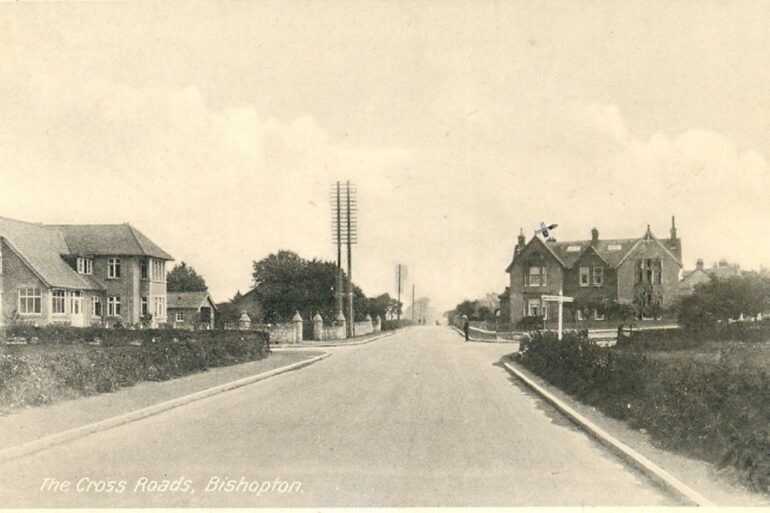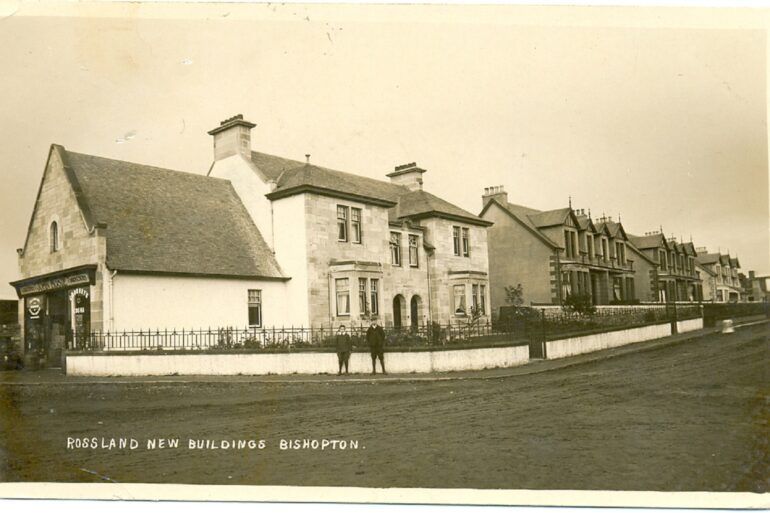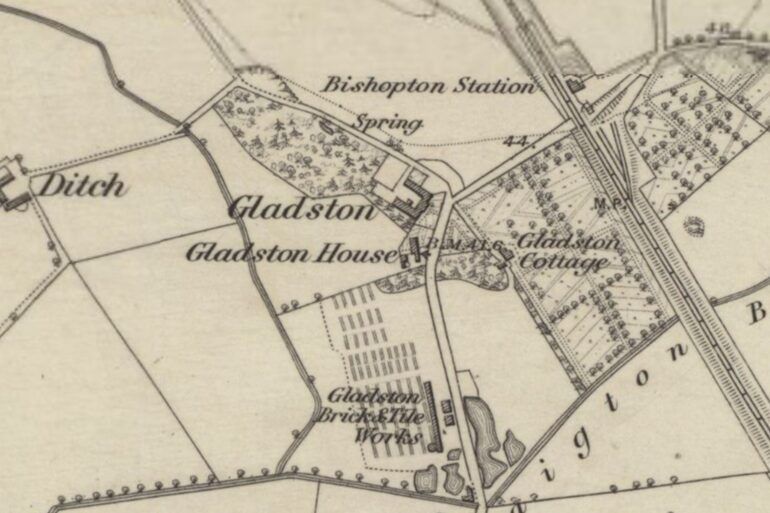A village with a fascinating story, come with us to discover the history and heritage of Bishopton.
Bishopton is one of Renfrewshire’s oldest settlements. And although you might not be able to tell when visiting, humans have lived in this location since at least Roman times.
We know this thanks to archaeologist Kenneth Arthur Steer. Whilst looking at aerial photos Bishopton, Kenneth spotted interesting crop marks around Whitemoss Farm. After further investigation, Kenneth and his team confirmed these marks were the location of a Roman Fort.
Experts believe that this fort, along with smaller Roman camps, were built to help defend the western flank of the Antonine Wall. This wall stretched right across the country from the River Clyde in the West to the Firth of Forth in the East.
At the time of the Romans, the River Clyde was much shallower than it is today. You would have been able to ford the river, and thanks to uncovered evidence on both riverbanks, we know the Romans did.
The Roman’s had a huge impact on Scotland. The Antonine Wall is often seen as “The biggest, most awe-inspiring building project the people of Scotland had ever seen.” It was built around 142AD. And is part of the Frontiers of the Roman Empire World Heritage Site. Alongside Hadrian’s Wall and the German Limes. You can experience the wall in several locations across Scotland, and it is well worth a visit.
Later, fragments of Samian pottery which were date-marked to correspond with the era of the Antonine era were found in the area. These are in Glasgow University’s Hunterian Museum for display and preservation.
Life with the Brisbanes
After the Romans, not much is known of what happened in the area until the 1300’s. This is when the lands of ‘Bishoptoun’ came into the possession of the Brisbane family. The land had originally been part of the Parish of Erskine. The name ‘Bishoptoun’ or ‘Bishop’s toun’ was due to its place as a summer retreat for visiting members of the clergy.
The Brisbane’s were a noble family with land in Stirling and Ayr. Shortly after taking over Bishoptoun, William Brisbane became Chancellor of Scotland.
It is hard to know what the settlement looked like at the time. However Thomas Pont’s 16th century map shows a large building, flanked by a ring of trees. It is thought this was built by William Brisbane, and included a large dwelling with a tower and adjoining buildings.
After years of large-scale modernisation, the Brisbanes would sell their home. The deeds then changed hands many times in quick succession. Owners included John Walkinshaw, Sir John Maxwell of Pollok and Sir J Campbell. In the 19th century, it was bought by Robert Stewart, the 11th Lord Of Blantyre.
At this stage, Bishopton was still a tight-knit, rural community. Up until 1840, its inhabitants defined themselves as residents of two distinct villages known as Blackstown and Easter Rossland respectively.
In 1882, Francis Groomes’ Ordnance Survey of Scotland stated that Bishopton contained ‘a free church, 2 inns, and a post office, with money order, savings’ bank, and telegraph departments.’
A 20th Century town
In 1900, the village accounted for just 21 homes. However, the 20th century would see a gradual upswing in population. With the number of houses rising to 140 in 1933. Additionally, the first socially rented homes were constructed by Renfrewshire County Council in the lead-up to World War II. As the 20th century progressed, this initiative would expand throughout the 60’s & 70’s. Until it formed the modern-day boundaries of Bishopton.
Much of the surrounding area was focused on agriculture. However, Bishopton’s main export for much of the 20th century centred around munitions.
In 1915 the Georgetown Filling Factory was opened. Named after Prime Minister Lloyd George, this factory assembled ‘40,000 items of Quick Firing (QF) ammunition, and 200,000 lbs of Breech Loading (BL) cartridges per week’. Said to have been visited by a young Winston Churchill, the factory employed upwards of 10,000 people. Additionally, it was so large it had its own magazine–The Georgetown Gazette—and two railway lines to transport its massive workforce.
Although it closed its doors in 1919, many of the Georgetown Filling Factory buildings would be used again for the Second World War. The Ministry Of Defence purchased a further 2000 acres of land in the area and the advent of war led to the opening of the Royal Ordnance Factory. With over 20,000 staff, the factory was Royal Ordnance’s ‘primary manufacturer of propellants for gun and rocket systems.’
Discover the history and heritage of Bishopton for yourself
Modern day Bishopton is a lively village, with an exciting events season and a real community spirit. Located just off the M8 motorway, it makes for a great base to explore the West of Scotland.
Why not come and experience Bishopton for yourself.


